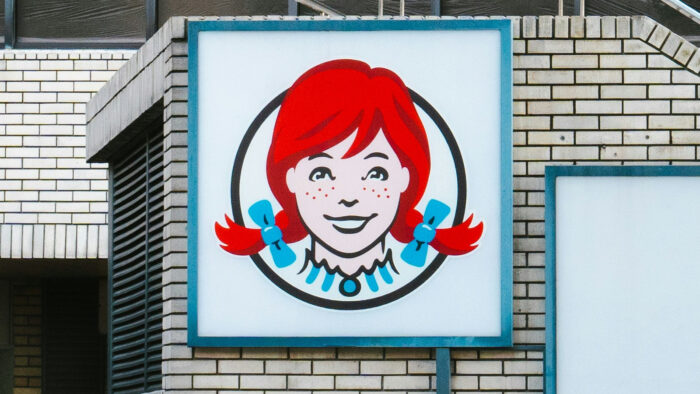
Wendy’s generic competitive strategy (based on Michael Porter’s model) is similar to those of other fast-food companies. However, Wendy’s differentiates its business and products from competitors through product innovation that addresses market and consumer trends.
In addition, Wendy’s generic strategy builds competitive advantage for the company to implement its intensive growth strategies. While these intensive strategies support growth, high quality remains at the core of the business, based on Wendy’s mission statement and vision statement.
The interactions among these strategies and their strategic objectives influence the company’s ability to grow internationally, especially while facing competition involving other large foodservice firms.
Wendy’s generic competitive strategy supports global competitiveness. The corresponding intensive strategies and strategic objectives enable the company’s international growth and expansion despite market saturation involving fast-food firms, such as McDonald’s, Subway, and Burger King, as well as coffeehouses, like Starbucks, and a variety of quick-service, casual-dining, and fine-dining establishments.
Competitive challenges in the industry environment shown in the Five Forces analysis of Wendy’s are addressed through the company’s intensive growth strategies and corresponding generic competitive strategies.
Wendy’s Generic Competitive Strategies (Porter’s Model)
Wendy’s generic strategy for competitive advantage is based on business needs linked to the approaches of competing firms in the global fast-food restaurant industry. The company’s overall approach emphasizes cost minimization. However, Wendy’s uses the following combination of generic competitive strategies:
- Cost leadership
- Differentiation
Wendy’s main generic competitive strategy is cost leadership. According to Porter’s model, cost minimization and, usually, price minimization are the main concerns in this generic strategy.
For example, in its early years, Wendy’s was the first fast-food restaurant chain to use a single price-point for its menu at 99¢ for every item. Today, the company continues to minimize its costs and prices to effectively compete against the low prices of other fast-food companies in the market.
Differentiation is Wendy’s secondary generic strategy for competitive advantage. Product uniqueness is among the main emphases in this generic competitive strategy.
For example, the company promotes its square-shaped fresh ground beef patties that are significantly bigger than those of many other fast-food hamburger chains. Wendy’s array of salad menu items also sets the company apart from many competitors in terms of health concerns. Such endeavors manifest the differentiation generic strategy for the company’s competitive advantage.
A strategic objective based on the generic competitive strategy of cost leadership is to standardize all of Wendy’s business processes to minimize costs through economies of scale. The resulting cost savings lead to competitive advantages.
Also, based on Wendy’s generic strategy of differentiation, a strategic objective is to implement continuous product innovation. Innovation creates competitive advantages through superior-quality food and beverage products that the company offers.
Wendy’s Intensive Growth Strategies (Ansoff Matrix)
Market Penetration. Wendy’s primary intensive growth strategy is market penetration. In this intensive strategy, the company grows through more sales to more consumers in the same markets where it currently operates.
For example, through Wendy’s marketing mix (4P) and the establishment of more restaurants, more diners are attracted to the restaurant chain. In applying this growth strategy, the generic competitive strategy of cost leadership enables the fast-food company to use affordable prices to attract more customers.
Also, the quality focus in Wendy’s mission and vision makes the business use quality as a selling point to attract more consumers and penetrate the market. A strategic objective linked to the market-penetration intensive strategy is to grow the restaurant chain through low-cost expansion alongside economies of scale.
Market Development. Wendy’s applies market development as its secondary intensive strategy for growth. Entry into new markets is an objective of this intensive growth strategy.
For example, the company grows by entering new countries through franchising, such as new franchise agreements for new operations in Asia. However, this is just a secondary intensive growth strategy because Wendy’s rate of entry to new countries is slow or limited.
The cost-leadership generic strategy supports this intensive strategy by enabling the foodservice business to use low costs and prices to expand and reach more customers. This intensive growth strategy leads to the strategic objective of expanding Wendy’s supply chain to support new market entry.
Product Development. Wendy’s rate of product development is low. Thus, product development is only a supporting intensive growth strategy for the company.
In this intensive strategy, Wendy’s grows through new products to attract even more consumers. For example, in the 1970s, the company introduced the salad bar. Also, new products and variants are introduced through the years.
The differentiation generic competitive strategy supports this intensive growth strategy by emphasizing product innovation. Thus, product innovation is one of Wendy’s strategic objectives for this intensive growth strategy.
References
- Ariyanti, D. A., Afrianti, A. D., Yarangga, M. M., Andarini, S., & Kusumasari, I. R. (2024). Business strategy development and planning. Journal of Finance and Business Digital, 3(2), 85-94.
- Mbombo, P. K., Rossouw, D., & Bounds, M. (2025). Components of Corporate Strategy Implementation to Ensure a Competitive Advantage. In International Conference of Accounting & Business (pp. 253-270). Springer, Cham.
- The Wendy’s Company – Form 10-K.
- The Wendy’s Company – What We Value in Our Food & Ingredients.
- Thi Thoan, L., Thuy, V. T. N., & Long, T. T. (2024). Does market competition make a difference in business strategy for listed companies? Cogent Business & Management, 11(1), 2312591.
- Wendy’s Announces New Development Agreements for 190 New Restaurants Across Italy and Armenia.